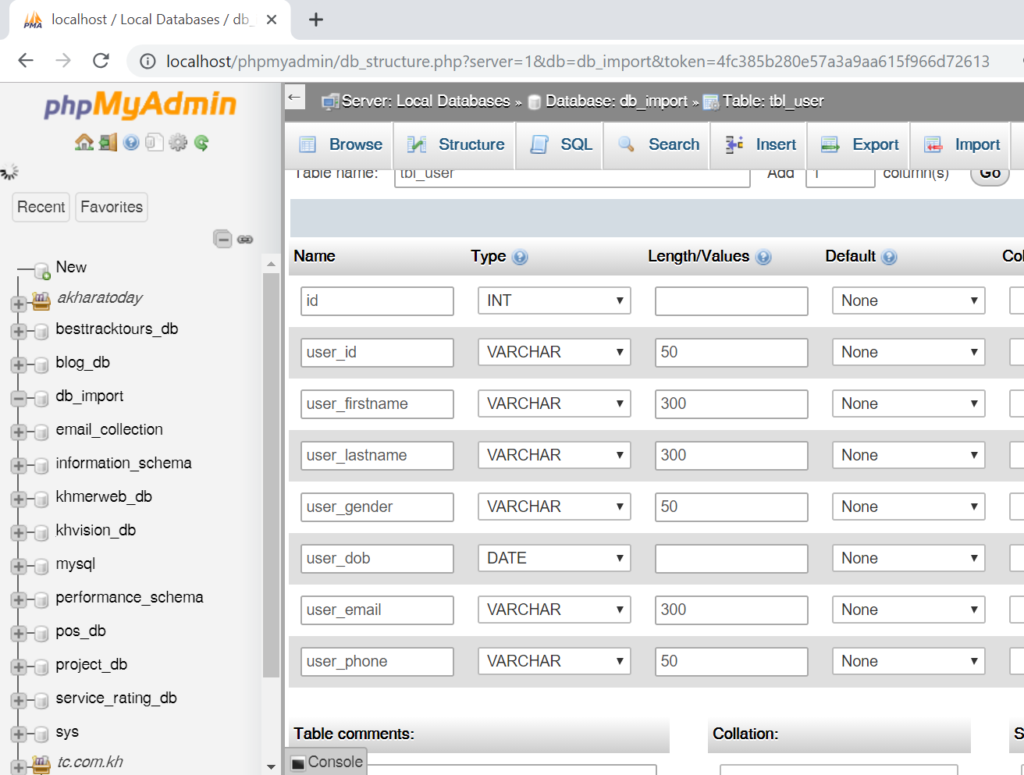Sql Auto Generate Primary Key
- Sql Auto Generate Primary Keys
- Sql Insert Auto Generated Primary Key
- Mysql Auto Increment Column
- Ms Sql Auto Increment Primary Key Management Studio
- Sql Auto Increment Primary Key Oracle
I have a table set up that currently has no primary key. All I need to do is add a primary key, no null, autoincrement. I'm working with a Microsoft SQL Server database. I understand that it can't be done in a single command but every command I try keeps returning syntax errors. I have one question, how to achieve auto increment in MS SQL. The one way i know so far is to perfix in the table eg CREATE TABLE Customer ( CUSId INT NOT NULL IDENTITY(1, 1) PRIMARY KEY. I will create a compound primary key, not have the ProjectRef column and then on the front end, calculate it to show for the other users. You don't need and don't want a composite primary key. As your ProjectID is an autonumber, each and every combination of ProjectRegion and ProjectID will be unique. Because SQL Server doesn't support pseudo columns for identifiers, updates that have to use the auto-generated key feature must operate against a table that contains an IDENTITY column. SQL Server allows only a single IDENTITY column per table. As SQL Server DBAs we may need to generate a script for the creation of all Primary Keys, Unique and Foreign Key constraints. We know with the SQL Server native tools that there is not a way to meet this need all at the same time. In this tip we look at t. You can define a primary key in SQL Server by using SQL Server Management Studio or Transact-SQL. Creating a primary key automatically creates a corresponding unique clustered index, or a nonclustered index if specified as such. Before You Begin Limitations and Restrictions. A table can contain only one PRIMARY KEY constraint. Jan 05, 2018 SQL Create table with primary key: In my previous articles, I have explained about the different SQL statements, Interview questions for different MNCs.In this article, I will explain the multiple ways to create table.
The AUTO_INCREMENT attribute can be used to generate a unique identity for new rows:
Which returns:
No value was specified for the AUTO_INCREMENT column, so MySQL assigned sequence numbers automatically. You can also explicitly assign 0 to the column to generate sequence numbers, unless the NO_AUTO_VALUE_ON_ZERO SQL mode is enabled. For example:
If the column is declared NOT NULL, it is also possible to assign NULL to the column to generate sequence numbers. For example:
When you insert any other value into an AUTO_INCREMENT column, the column is set to that value and the sequence is reset so that the next automatically generated value follows sequentially from the largest column value. For example:
Updating an existing AUTO_INCREMENT column value in an InnoDB table does not reset the AUTO_INCREMENT sequence as it does for MyISAM and NDB tables.
You can retrieve the most recent automatically generated AUTO_INCREMENT value with the LAST_INSERT_ID() SQL function or the mysql_insert_id() C API function. These functions are connection-specific, so their return values are not affected by another connection which is also performing inserts.
Sql Auto Generate Primary Keys
Use the smallest integer data type for the AUTO_INCREMENT column that is large enough to hold the maximum sequence value you will need. When the column reaches the upper limit of the data type, the next attempt to generate a sequence number fails. Use the UNSIGNED attribute if possible to allow a greater range. For example, if you use TINYINT, the maximum permissible sequence number is 127. For TINYINT UNSIGNED, the maximum is 255. See Section 11.1.2, “Integer Types (Exact Value) - INTEGER, INT, SMALLINT, TINYINT, MEDIUMINT, BIGINT” for the ranges of all the integer types.
Sql Insert Auto Generated Primary Key

For a multiple-row insert, LAST_INSERT_ID() and mysql_insert_id() actually return the AUTO_INCREMENT key from the first of the inserted rows. This enables multiple-row inserts to be reproduced correctly on other servers in a replication setup.
Mysql Auto Increment Column
To start with an AUTO_INCREMENT value other than 1, set that value with CREATE TABLE or ALTER TABLE, like this:
Ms Sql Auto Increment Primary Key Management Studio
For information about AUTO_INCREMENT usage specific to InnoDB, see Section 14.6.1.6, “AUTO_INCREMENT Handling in InnoDB”.
For
MyISAMtables, you can specifyAUTO_INCREMENTon a secondary column in a multiple-column index. In this case, the generated value for theAUTO_INCREMENTcolumn is calculated asMAX(. This is useful when you want to put data into ordered groups.auto_increment_column) + 1 WHERE prefix=given-prefixWhich returns:
In this case (when the
AUTO_INCREMENTcolumn is part of a multiple-column index),AUTO_INCREMENTvalues are reused if you delete the row with the biggestAUTO_INCREMENTvalue in any group. This happens even forMyISAMtables, for whichAUTO_INCREMENTvalues normally are not reused.If the
AUTO_INCREMENTcolumn is part of multiple indexes, MySQL generates sequence values using the index that begins with theAUTO_INCREMENTcolumn, if there is one. For example, if theanimalstable contained indexesPRIMARY KEY (grp, id)andINDEX (id), MySQL would ignore thePRIMARY KEYfor generating sequence values. As a result, the table would contain a single sequence, not a sequence pergrpvalue.
Sql Auto Increment Primary Key Oracle
More information about AUTO_INCREMENT is available here:
How to assign the
AUTO_INCREMENTattribute to a column: Section 13.1.18, “CREATE TABLE Statement”, and Section 13.1.8, “ALTER TABLE Statement”.How
AUTO_INCREMENTbehaves depending on theNO_AUTO_VALUE_ON_ZEROSQL mode: Section 5.1.10, “Server SQL Modes”.How to use the
LAST_INSERT_ID()function to find the row that contains the most recentAUTO_INCREMENTvalue: Section 12.15, “Information Functions”.Setting the
AUTO_INCREMENTCod ww2 cd key generator forum. value to be used: Section 5.1.7, “Server System Variables”.AUTO_INCREMENTand replication: Section 16.4.1.1, “Replication and AUTO_INCREMENT”.Server-system variables related to
AUTO_INCREMENT(auto_increment_incrementandauto_increment_offset) that can be used for replication: Section 5.1.7, “Server System Variables”.